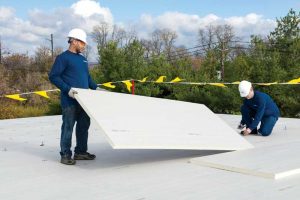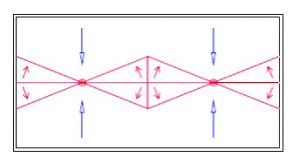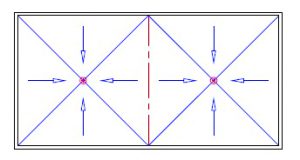
When installing a new or replacement low-slope roof, the right components can dramatically improve the system’s performance and longevity. As the continued effects of climate change place greater demands on the built environment, adequate insulation has increasingly become a central element in evaluating a building’s resiliency and thermal efficiency. It is estimated that Americans currently spend more than $200 billion annually on energy bills. Globally, buildings and the building construction sector are responsible for over one-third of total global energy consumption and nearly 40 percent of total direct and indirect CO2 emissions.
One key strategy for reducing the built environment’s impact on climate change is through the construction of more energy-efficient building envelope systems. We know that heat transfer occurs from warm to cool areas and therefore a significant amount of energy can leave a building through an inadequately insulated roof assemblies during heating season (winter) and enter a building through under-insulated roof assemblies during cooling season (summer). In a building that lacks the minimum energy code required insulation, additional energy will be required to compensate for these losses or gains.

The International Energy Conservation Code (IECC) has been developed over the past decade to best reflect the current understanding of cost-effective ways to construct energy-efficient residential and commercial buildings. For low-slope roofs, the minimum amount of above-deck insulation required was increased in the 2012 and 2015 versions of the IECC and has been continuously validated in the 2018 and 2021 IECC versions. Satisfying or exceeding the R-value requirements for a building’s particular Climate Zone gives it protection from the temperature ranges and weather events most prevalent in its location. For commercial and low-slope roof applications that utilize the benefits of entirely above deck insulation (IEAD), adding two or more layers of continuous insulation like polyisocyanurate (polyiso) with staggered joints can deliver exceptional thermal performance without significant increases to roof system thickness.
How best to achieve performance beyond thermal efficiency

While an effective roofing system incorporates adequate insulation levels to limit unwanted heat losses or gains, the roof must be designed to protect the building from water infiltration. A roof’s ability to drain or shed water effectively has less to do with the roof membrane itself and more to do with what lies beneath the visible roof surface. Designing roofs with adequate slope, either through structural elements or tapered insulation systems, ensures proper drainage and reduces maintenance.
The International Building Code (IBC) establishes minimum slope requirements for the installation of roof covering materials (IBC Section 1507). For example, the IBC requires that the installation of thermoset single-ply roofing shall have a design slope of not less than one-fourth unit vertical in 12 units horizontal for draining (IBC Section 1507.12.1). However, the IBC does not include prescriptive requirements for how the specified slope is to be achieved. Combining the desire to maximize insulation with an added interest in mitigating the damage from ponding water on rooftops, many effective roof designs include tapered insulation to increase the roof’s thermal efficiency while also diverting rainwater into gutters, scuppers, and drains.




